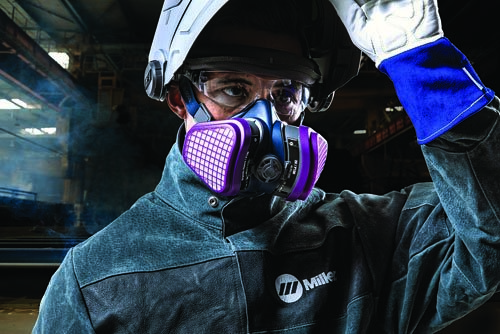
Essential PPE in the Food Industry: What You Need to Know
Overwhelmed by PPE options for food safety? Master your PPE selection for food workers safety with these practical tips.

Get 20€ off on your first order!
Choosing the right filters and cartridges for your respirator can be challenging, but it’s crucial for ensuring your safety and comfort at work. In this guide, we’ll help you select the best components for your environment, making it easy to match the right filters and cartridges with your needs.
By the end of this article, you’ll understand how filters and cartridges work, how to assess your workplace hazards, and how to choose the ideal combination for optimal protection. We’ll also provide tips on European safety standards and give you the confidence to make the best decision for your respirator.
With our expertise, you’ll not only find the right components but also be prepared for the next steps—like selecting a compatible full mask respirator or knowing when to replace your filters and cartridges.
For a broader understanding of respirator selection, read our parent article, “How To Choose The Right Full Mask Respirators – A Buyer’s Guide”.
Filters and cartridges are specialized components designed to remove contaminants from the air you breathe, ensuring safety in diverse work environments such as construction, healthcare, and chemical handling. Depending on your work environment and specific hazards, different types of filters and cartridges provide varying levels of protection.
Each component must align with European standards, such as EN 143 for filters and EN 14387 for gas cartridges, which define performance requirements for particulate and gas/vapor protection. These standards ensure reliable and tested protection, giving users peace of mind.
When selecting filters, it’s essential to match their capability to the airborne hazards present in your environment. Filters are classified as:
Cartridges are categorized based on the gases and vapors they neutralize. Below is a table summarizing key types:
| Cartridge Type | Protection Offered | Typical Applications |
| A (Brown) | Organic vapors | Paint spraying, solvent handling |
| B (Grey) | Inorganic gases | Chlorine, hydrogen sulfide environments |
| E (Yellow) | Acid gases | Battery manufacturing, chemical plants |
| K (Green) | Ammonia and organic ammonia derivatives | Fertilizer production |
| AX | Low boiling point organic compounds | Special applications (short duration use) |
Choose cartridges that are compatible with your full mask respirator, also called air-purifying respirators, for optimal performance.

To determine the best combination for your needs, consider the following:
Regular maintenance is key to keeping your respirator performing reliably. Replace filters and cartridges when:
Regular replacement of components ensures your respirator continues to function effectively, keeping you comfortable and focused at work.
Selecting the appropriate full mask respirator to house your filters and cartridges is crucial for ensuring a secure fit, comfort during extended use, and compatibility with the required protection level. For expert advice, refer to “How To Choose The Right Full Mask Respirators – A Buyer’s Guide”.
We hope this guide has been helpful in navigating the essential factors for selecting the right filters and cartridges for your respirator. From understanding the different types of filters to evaluating cartridge compatibility, we’ve covered everything you need to ensure reliable protection in your specific work environment.
Have questions or need advice on finding the perfect respirator setup? Don’t hesitate to reach out—we’re always here to help and ensure your safety and confidence with every purchase.
– The Droppe Team
Replace filters when airflow is reduced or they show signs of wear. Cartridges should be replaced according to manufacturer guidelines or if performance decreases.
No, filters and cartridges must be compatible with your specific respirator model for optimal performance.
Lifespan depends on usage and environmental factors, but it’s important to follow manufacturer recommendations and replace them on schedule.
Yes, combination filters and cartridges provide protection against both particulate matter and chemical gases.
It’s crucial to choose the right filter and cartridge combination based on specific hazards for each environment. Always perform a risk assessment first.
Thank you! You've signed up for our newsletter.



















Overwhelmed by PPE options for food safety? Master your PPE selection for food workers safety with these practical tips.

Struggling to maintain clear vision in demanding environments? This guide is here to help. By the end, you’ll know exactly...

Electricians across Europe face unique challenges that require reliable safety glasses to ensure both protection and efficiency. Whether safeguarding against...

Overwhelmed by PPE options for food safety? Master your PPE selection for food workers safety with these practical tips.

Struggling to maintain clear vision in demanding environments? This guide is here to help. By the end, you’ll know exactly...

Electricians across Europe face unique challenges that require reliable safety glasses to ensure both protection and efficiency. Whether safeguarding against...
Get 20€ off on your first order!
Save 30% by buying directly from brands, and get an extra 10€ off orders over €100
Save 30% by buying directly form brands, and get an extra 10€ off orders over €100